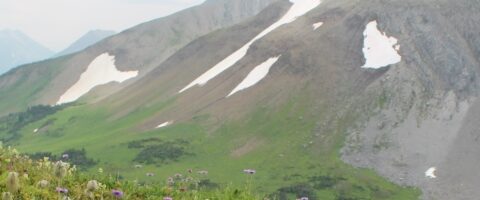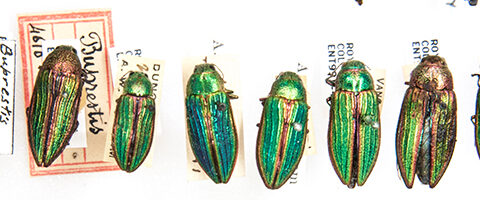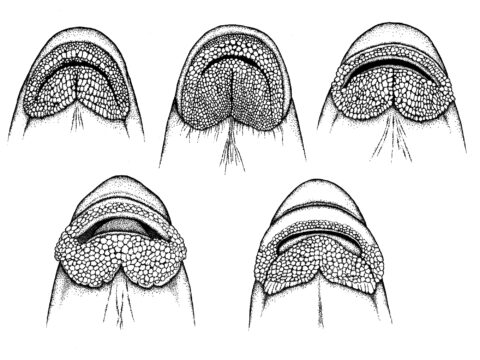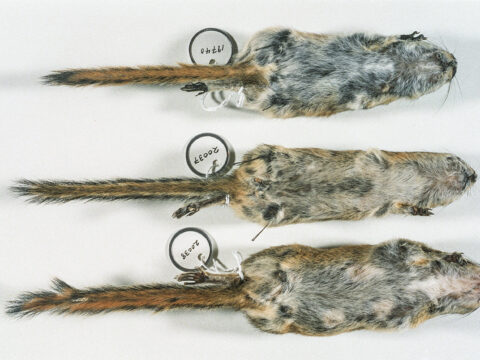Biodiversity
Pathways

Explore the museum's bird collection. Learn how to help birds through citizen science.
View Pathway
Orcas are embedded in human culture, from the screen to aquariums, mass media has shown the world the beauty of this species and how human behavior controls their fate. There is so much more for us to learn about orca culture and what they need to survive.
View Pathway
2In 2 playlists
British Columbia has high mountains. Lots of them. In fact, more than 12 per cent of the province is alpine tundra—land above the trees. The alpine tundra is a land of extremes. Trees can’t grow at such high elevations because of cold temperatures. The growing season is brief, and some areas are covered by snow…
View Pathway
4In 4 playlists
Learning about native plants can connect us to the places we live. Studying First Peoples’ uses of plants can teach us which native berries are edible and which are not.
View Pathway
1In 1 playlists
Marine invertebrates are animals without backbones that live in the ocean. These creatures make up most of ocean animal life. Learn about the incredible diversity beneath the waves.
View Pathway
1In 1 playlists
The study of insects (entomology) is alive and well at the Royal BC Museum. Go behind the scenes to discover how we learn about the diversity of insect life in this province.
View Pathway
2In 2 playlists
Many people fear spiders but they are rarely harmful to humans and are important natural predators of insects. The spider collection at the Royal BC Museum strives to reflect the diversity of spiders in this province.
View Pathway
1In 1 playlists
The Royal BC Museum fish collection is varied and wonderful. Explore the astounding diversity of British Columbia fishes through the collection and scientific illustration.
View Pathway
5In 5 playlists
We're all in this together. An ecosystem is a natural community. When species disappear it can throw an entire system off balance, with far-reaching consequences for ecosytems, for the planet, and for us. What can we do about it?
View Pathway
5In 5 playlists
American botanist Mary Gibson Henry collected plants in northeastern BC in 1931. Her pioneering journey was recorded on film. Lucky for us, BC Archives has a copy.
View Pathway
2In 2 playlists
With all the choices for recording images these days, the art of illustration is still valued by scientific researchers. Explore the work of gifted biologist and illustrator Dr Hart.
View Pathway
2In 2 playlists
Listening for birds is a skill that takes patience and perseverance. Grace Bell used her skill and love of birds to record British Columbia bird calls and songs.
View Pathway
2In 2 playlists
The mammal collection is as diverse as the mammals of BC. Mammal specimens at the museum are preserved, stored and made available for research.
View PathwayMedia

Orcas Educator Resource Guide
Read
Backyard Bingo
Read
Q and A with H Reiswig
Read
Alpine Biome
Listen
Habitat Diversity
Look
BioBlitz Discoveries
Watch
Marine Travellers from Japan
Watch
The Fascinating World of Deep Sea Biology
Watch
Seaweed and Bugs
Watch
Spiny-eared Assfish
Watch
Monarch Butterflies
Watch
Gavin Hanke
Watch
Summer 2016 Facebook Live Species At Risk Event
Watch
Look

RobberFlies
Read
Discovering Diversity Part 1
Read
Behind the Scenes: Entomology
Watch
Sucker Mouths
Look
Fish Tails
Look
Watching Dragons and Damsels
Read
Discovering Diversity Part 4
Read
Discovering Diversity Part 3
Read
Discovering Diversity Part 2
Read
Into the Deep
Read
Entomology: Behind the Scenes
Watch
Thyasirid Clam
Look
Alaska Eelpout
Look
Fall Spider Season
Watch
2013sl0409139-149fs
Look
8477697470_363846ff05_o
Look
Spider Myths
Watch
What Species Would You Save? Video
Watch
What Species Would You Save?
Watch
Top View Yellow-pine Chipmunk Study Skins
Look
Bottom View Yellow-pine Chipmunk Study Skin
Look
Yellow-pine Chipmunks Study Skins
Look
Dr Melissa Frey
Watch
Top View Yellow-pine Chipmunk Study Skins
Look
Bottom View Yellow-pine Chipmunk Study Skin
Look
Wild Kermode Bear
Look
